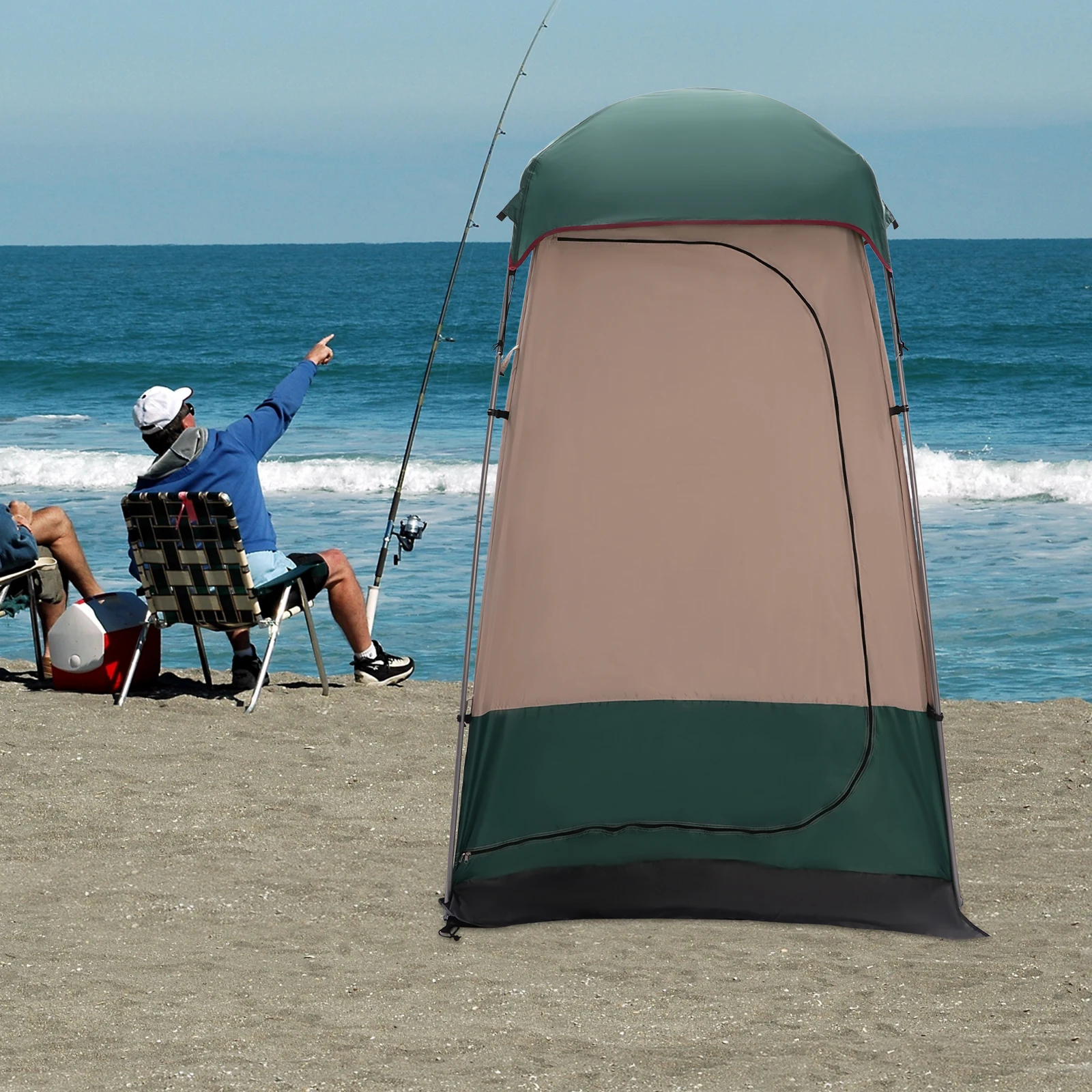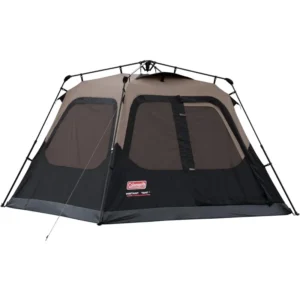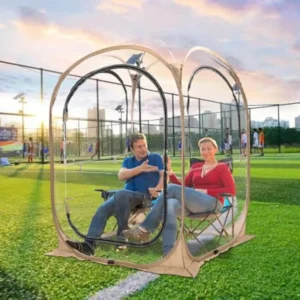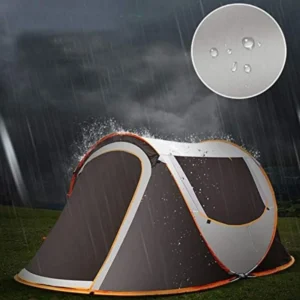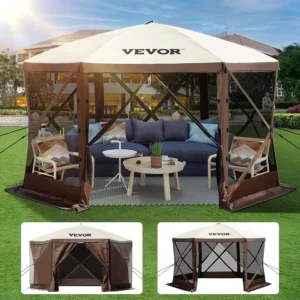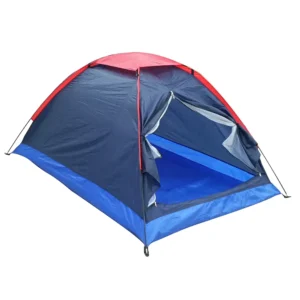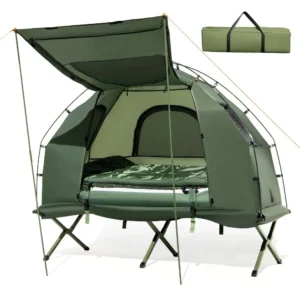Why Material Selection Is Critical for Waterproof Pop-Up Shelters
When you’re enjoying the great outdoors, few things can ruin an experience faster than water leaking through your shelter. Pop-up shelters serve one primary purpose above all others: keeping you and your gear dry when the skies open up. The materials used in these shelters directly determine whether you’ll stay comfortable and dry or end up with soggy equipment and dampened spirits.
Inadequate waterproofing doesn’t just mean discomfort—it can lead to damaged electronics, ruined food supplies, wet sleeping bags, and even early termination of camping trips or outdoor events. The difference between a successful outdoor adventure and a miserable one often comes down to the quality and performance of your shelter’s materials.
The materials used in pop-up shelters influence several critical factors:
– How effectively water is repelled during light showers versus heavy downpours
– How long the waterproofing will last before deteriorating
– The shelter’s overall weight and packability
– How well it stands up to UV exposure and repeated use
– Whether it provides good value for your investment
Understanding shelter options for two campers helps you make better decisions when shopping, especially when evaluating waterproof qualities. This guide cuts through marketing hype to help you identify genuinely waterproof shelters that will perform when you need them most.
The design of compact shelters for two campers directly impacts their weather resistance capabilities, but even the best design can’t compensate for poor material selection.
Understanding Waterproofing Technical Specifications and Terminology
Before diving into specific materials, you need to understand the key measurements and terms manufacturers use to describe waterproof performance.
Hydrostatic Head (HH) Ratings
The hydrostatic head rating is the most important metric for waterproofing. It measures how much water pressure a fabric can withstand before leaking, expressed in millimeters (mm).
How it’s tested: A tall tube is placed over the fabric and filled with water. The height at which water begins to penetrate the fabric determines its rating. For example, a 1500mm rating means the fabric can withstand a 1500mm (about 5 feet) column of water before leakage occurs.
| Hydrostatic Head Rating | Weather Capability |
|---|---|
| 800-1,000mm | Light rain showers |
| 1,500-2,000mm | Moderate rainfall |
| 3,000-5,000mm | Heavy rainfall, suitable for most camping conditions |
| 5,000mm+ | Extreme conditions, heavy continuous rain |
Many people confuse “water-resistant” with “waterproof.” Water-resistant materials may repel light rain for short periods but will eventually soak through. Truly waterproof materials maintain their protective barrier even under prolonged exposure to moisture.
Understanding 3000mm waterproof ratings can help you determine if a shelter meets your specific needs, as this is often considered the threshold for genuine all-weather protection.
Denier (D) Rating
Denier measures the thickness and weight of individual fabric threads. Higher denier means thicker, more durable fabric.
- 150D-210D: Lightweight but less durable
- 300D-420D: Good balance of weight and durability for most pop-up shelters
- 600D+: Heavy-duty, extremely durable but heavier
Denier directly affects tear strength and puncture resistance. A higher denier fabric can better withstand the stress of repeated setup and takedown, as well as contact with branches or rough surfaces.
Thread Count
Thread count refers to the number of threads per square inch of fabric. Higher thread counts create tighter weaves that are more resistant to water penetration, even before applying waterproof coatings.
Ripstop Technology
Ripstop fabrics incorporate a reinforcement technique that makes tears resistant to spreading. Stronger threads are interwoven at regular intervals, creating the characteristic grid pattern visible in many high-quality tent fabrics. If a tear does occur, it’s contained within a small section rather than running through the entire panel.
Primary Fabric Materials for Pop-Up Shelter Canopies
The main body of your pop-up shelter will typically be made from one of these primary materials, each with distinct waterproofing characteristics.
Polyester Fabrics
Polyester is the most common material for pop-up shelters due to its excellent balance of properties and cost.
Properties:
– Naturally water-resistant (but requires coating for true waterproofing)
– Excellent UV resistance compared to nylon (resists degradation from sunlight)
– Doesn’t stretch when wet, maintaining its shape in rainy conditions
– Available in various thicknesses, typically 150D-600D for shelters
Most polyester shelters achieve hydrostatic head ratings of 1,500-3,000mm when properly coated, making them suitable for typical rainfall. They represent the best value for most users, balancing performance with reasonable cost.
Pros:
– Good UV resistance
– Maintains shape when wet
– Cost-effective
– Widely available
– Relatively lightweight
Cons:
– Lower strength-to-weight ratio than nylon
– Less breathable than some alternatives
– Entry-level polyester shelters may have inadequate waterproofing
Understanding the relationship between tent materials and pack weight balance can help you make informed decisions when choosing polyester options.
Nylon Variants
Nylon offers superior strength while weighing less than polyester of the same denier.
Properties:
– Exceptional strength-to-weight ratio
– More expensive than polyester
– Stretches when wet (can affect shelter tension and shape)
– Requires UV-inhibitor treatments to prevent rapid degradation
Nylon is commonly used in premium lightweight shelters where weight savings justify the higher cost. When coated with silicone (creating “silnylon”), it provides excellent water repellency.
Pros:
– Lightweight
– Very strong for its weight
– Packs down smaller than polyester
– Superior tear resistance
Cons:
– Less UV resistant unless specially treated
– Stretches when wet, requiring adjustment
– More expensive than polyester
– Typically less durable over time
Oxford Fabric (Polyester Variant)
Oxford fabric is a specialty polyester with a distinctive basket weave pattern that enhances durability.
Properties:
– Highly tear-resistant due to weave pattern
– Superior abrasion resistance
– Often used in higher-end shelters
– Common in 300D-600D weights
Pros:
– Extremely durable
– Excellent waterproofing potential when coated
– Good air circulation due to weave pattern
– Resists punctures and tears
Cons:
– Heavier than standard polyester of same denier
– More expensive than standard polyester
– Less common in entry-level shelters
Vinyl/PVC-Coated Materials
For the most extreme conditions or commercial applications, vinyl or PVC-coated fabrics offer superior waterproofing.
Properties:
– Nearly 100% waterproof without additional treatment
– Very heavy compared to other options
– Extremely durable
– Less breathable than other options
Pros:
– Exceptional waterproofing (5,000mm+ hydrostatic head)
– Very long-lasting
– Resistant to most environmental factors
– Easy to clean
Cons:
– Heavy and bulky
– Poor breathability leads to condensation
– Less environmentally friendly
– Stiff and harder to pack
– More expensive
Our waterproof pop-up tent collection features various fabric options that balance waterproofing, weight, and durability for different needs.
Waterproofing Technologies and Treatment Methods
The base fabric is only part of what makes a shelter waterproof. Various coatings and treatments provide the true waterproof barrier.
Polyurethane (PU) Coating
Polyurethane is the most common waterproofing treatment for pop-up shelters.
Process: Liquid polyurethane is applied to the inside of the fabric, creating a waterproof layer that blocks moisture penetration.
Performance:
– Typically adds 1,500-3,000mm of hydrostatic head protection
– Relatively inexpensive to apply
– Forms a physical barrier against water
– Gradually breaks down over time with exposure to humidity and UV
Lifespan: PU coatings typically maintain good waterproofing for 3-5 years of regular use before degradation becomes noticeable. Higher-quality PU coatings with multiple layers last longer than single-layer applications.
Silicone Coatings (Silnylon/Silpoly)
Silicone represents a premium alternative to PU coatings.
Process: Silicone is impregnated into the fabric rather than just applied to one side.
Performance:
– Creates a highly water-repellent surface where water beads up and rolls off
– More durable than PU coatings
– Increases fabric strength by up to 30%
– Maintains flexibility in cold weather
– Doesn’t break down as quickly as PU
Considerations: Silicone-coated fabrics are more expensive but offer better long-term value for serious outdoor enthusiasts. The main drawback is that seam tape doesn’t adhere to silicone, requiring liquid seam sealing instead.
Multiple-Layer Coatings
Premium shelters often feature multiple layers of waterproof coatings.
Benefits:
– Provides redundancy if the outer layer is damaged
– Achieves higher hydrostatic head ratings (4,000mm+)
– Significantly extends the effective lifespan of waterproofing
Durable Water Repellent (DWR) Treatments
DWR works alongside primary waterproofing to enhance performance.
Function:
– Applied to the outer fabric surface
– Makes water bead up and roll off rather than soak into the fabric
– Reduces “wetting out” where fabric becomes saturated with water
– Maintains breathability while improving water resistance
Maintenance: DWR treatments wear off over time and require periodic reapplication for continued effectiveness.
Seam Sealing Technologies
The stitching points in any shelter create potential entry points for water unless properly sealed.
Types:
– Factory tape sealing: Heat-applied waterproof tape covers seams
– Liquid seam sealant: Applied manually to seal needle holes and thread
– Welded seams: Heat-fused seams eliminate needle holes entirely (premium option)
Quality seam sealing is as important as the fabric itself—a shelter with 5,000mm fabric but poor seams will leak faster than a 2,000mm fabric with excellent seam sealing.
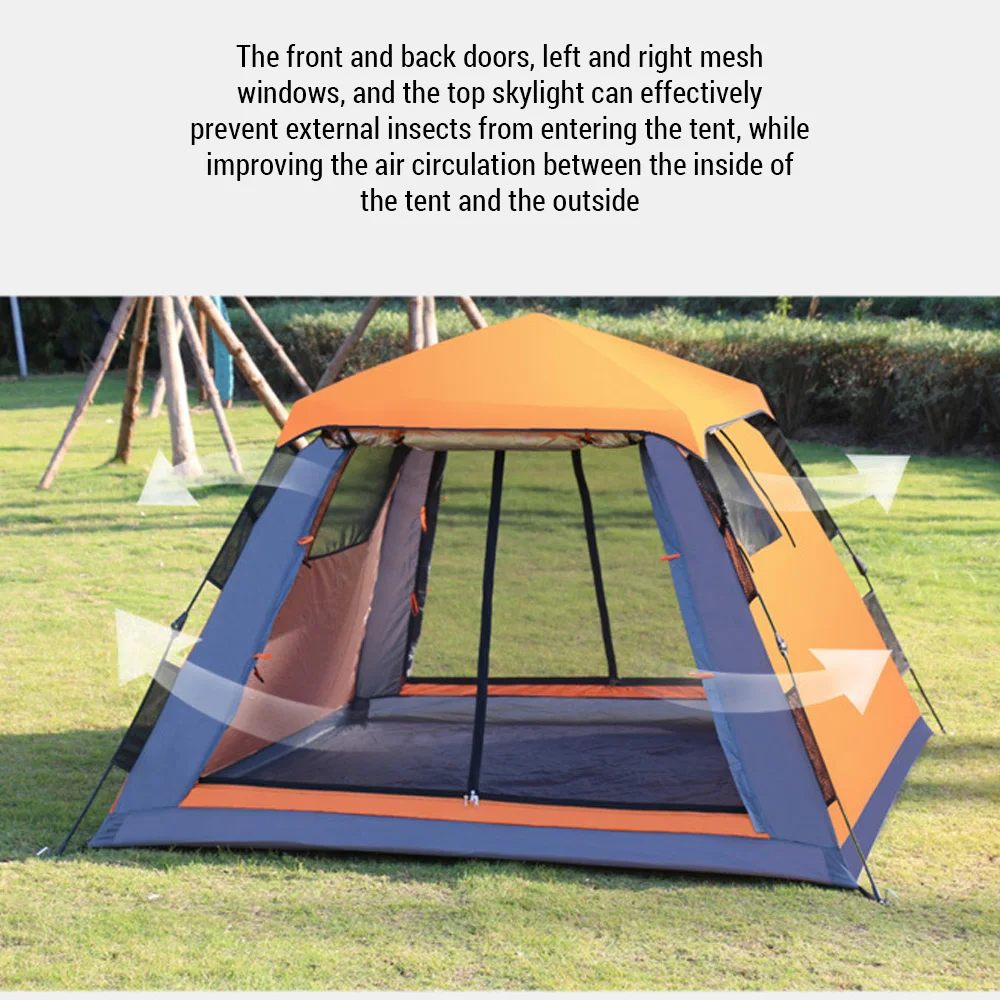
Framework Materials and Their Role in Rain Protection
The framework of a pop-up shelter plays a crucial role in waterproofing performance beyond just supporting the fabric.
Frame Material Impact on Water Protection
Steel Frames:
– Provide superior stability under rain loading
– Resist bending that could create water-pooling depressions
– Heavy weight adds wind stability but increases transportation difficulty
– Rust-resistant coatings essential for longevity
Aluminum Frames:
– Offer good strength while reducing weight significantly compared to steel
– Typically found in mid-range to premium shelters
– Resist corrosion naturally
– May flex slightly more than steel, potentially allowing water pooling in heavy rain
Fiberglass Components:
– Common in budget pop-up shelters
– Flexible, which helps with setup but can allow excessive bending during rainfall
– Less durable over time with repeated flexing
– Require more support points to prevent water pooling
Design Features for Enhanced Water Runoff
The shape and engineering of a shelter significantly impact its ability to shed water effectively:
– Peaked roof designs shed water more efficiently than flat sections
– Minimum 15-degree slope angles prevent water accumulation
– Reinforced corners prevent sagging where water might collect
– Integrated water channels direct runoff away from entrances and seams
Our lightweight pop-up tent options feature carefully designed frame systems that balance weight with effective water management.
Performance Comparison: How Materials Affect Real-World Use
When choosing materials for your pop-up shelter, you’ll face inevitable trade-offs between various performance factors.
Weight vs. Waterproofing Trade-offs
| Material Combination | Typical Weight | Hydrostatic Head | Setup Ease | Best For |
|---|---|---|---|---|
| Lightweight polyester + minimal PU coating | Very light | 1,000-1,500mm | Very easy | Fair weather, occasional use |
| Standard polyester + single PU layer | Moderate | 2,000-3,000mm | Easy | Regular weekend camping |
| Heavy polyester/Oxford + multi-layer coating | Heavy | 3,000-5,000mm | Moderate | Extended trips, varied conditions |
| Vinyl/PVC materials | Very heavy | 5,000mm+ | Challenging | Base camps, extreme conditions |
Understanding how these weather resistance features in fast-pitch tents work together helps inform your selection process.
Durability Factors Beyond Waterproofing
UV Resistance: Polyester naturally outperforms nylon in UV resistance. Untreated nylon can lose up to 50% of its strength after just weeks of continuous sun exposure, while polyester maintains strength much longer.
Abrasion Resistance: Oxford fabrics and higher-denier materials offer superior resistance to friction damage from branches, rocks, or repeated setup/takedown.
Temperature Performance: Vinyl and PVC materials can become brittle in extreme cold, while nylon tends to perform better across temperature ranges but absorbs more moisture when humid.
Condensation Management
Material breathability directly impacts condensation inside your shelter:
– Polyester and nylon allow minimal moisture vapor transmission
– Coatings further reduce breathability (silicone slightly better than PU)
– Ventilation features become more important with less breathable materials
– Single-wall designs suffer more condensation than double-wall structures
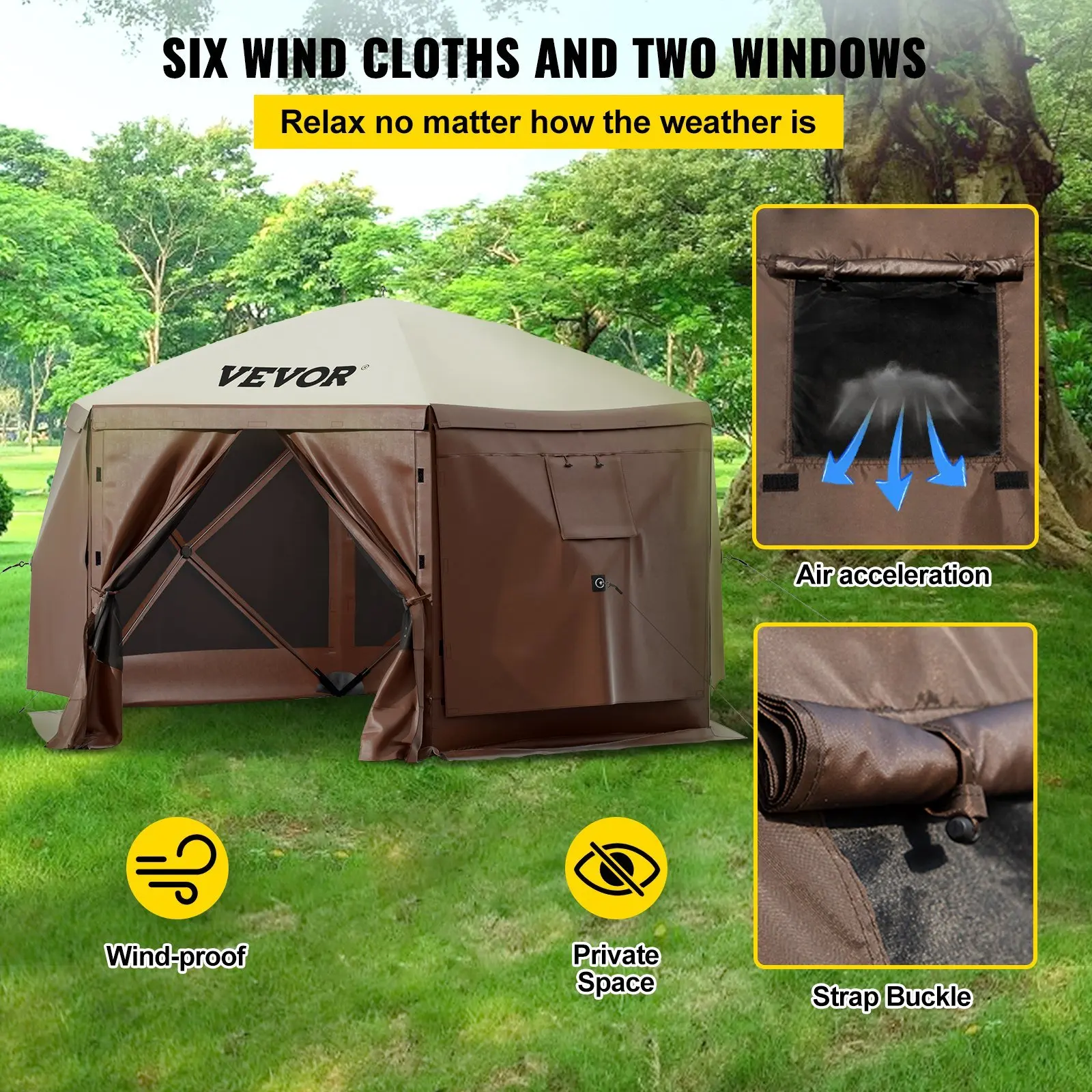
Caring for Your Rainproof Pop-Up Shelter Materials
Proper maintenance significantly extends the waterproof performance of your shelter.
Cleaning Guidelines by Material Type
Polyester and Nylon:
1. Shake out debris and spot clean with mild soap and cold water
2. Avoid harsh detergents or bleach that can damage waterproof coatings
3. Rinse thoroughly to remove all soap residue
4. Air dry completely before storage
Vinyl/PVC Materials:
1. Clean with mild soap solution and soft brush for stubborn dirt
2. Rinse completely
3. Special vinyl cleaners can restore appearance and protect the surface
Re-waterproofing Procedures
When water no longer beads on your shelter’s surface, it’s time to restore waterproofing:
For DWR Restoration:
1. Clean the shelter thoroughly and ensure it’s completely dry
2. Apply spray-on DWR treatment evenly to outer surface
3. Allow to dry completely before packing
For PU Coating Restoration:
1. Apply tent-specific polyurethane sealer to interior coating
2. Focus on worn areas and thin spots
3. Allow 24+ hours to cure fully
Seam Resealing:
1. Identify leaking seams by looking for staining or performing a hose test
2. Apply seam sealer along the inside of all seams
3. Pay special attention to corners and stress points
4. Allow to dry fully (typically 24 hours)
Storage Best Practices
How you store your shelter is as important as how you clean it:
– Never store while damp or wet (leads to mildew and coating degradation)
– Fold loosely rather than tightly compressing
– Store in a cool, dry place out of direct sunlight
– Use a breathable storage bag rather than the compact carrying case
Mastering proper two-person lightweight tent setup techniques also helps prevent unnecessary strain on waterproof materials.
Choosing the Right Rainproof Shelter for Different Applications
Different usage scenarios demand different waterproofing solutions.
Event-Specific Recommendations
Weekend Camping (1-2 nights):
– Minimum 2,000mm hydrostatic head
– Standard polyester with PU coating usually sufficient
– Focus on easy setup/takedown over extreme durability
Extended Backcountry Trips (7+ days):
– 3,000mm+ hydrostatic head recommended
– Consider silicone-coated fabrics for better long-term performance
– Prioritize seam quality and reinforced stress points
Commercial or Long-term Setup:
– 4,000mm+ hydrostatic head
– Vinyl/PVC or heavy Oxford fabric
– Heavy-duty frame systems that prevent water pooling
– UV-stabilized materials to prevent degradation
Budget Considerations
Entry-level waterproof shelters (under $100) typically feature:
– 150D-210D polyester
– 1,500mm-2,000mm hydrostatic head
– Basic seam taping
– Adequate for occasional use in light to moderate rain
Mid-range shelters ($100-$250) offer significant improvements:
– 210D-300D fabrics
– 2,000mm-3,000mm hydrostatic head
– Full seam sealing
– Better frame systems to prevent water pooling
Premium shelters ($250+) provide:
– Multiple-layer waterproofing
– Silicone treatments and/or 3,000mm+ ratings
– Superior materials throughout
– Fully sealed or welded seams
– Designed for extreme conditions
The process of choosing the ultimate compact shelter for two involves balancing these waterproofing characteristics with other important features.
Easy Setup Camping Tent, Instant Camping Tent
Instant Cabin Tent Double Layer Canvas 1-Minute Setup Spacious Family Camping Shelter with Air Vents$308.10 Select options This product has multiple variants. The options may be chosen on the product pagePop Up Dome Tent, Waterproof Pop Up Tent
$218.89 Select options This product has multiple variants. The options may be chosen on the product page- $633.01 Select options This product has multiple variants. The options may be chosen on the product page
Easy Setup Camping Tent, Trekking Pole Backpacking Tent
$142.40 Select options This product has multiple variants. The options may be chosen on the product pageEasy Setup Camping Tent, Waterproof Camping Tent
All-in-One Elevated 1-Person Camping Tent Cot with Integrated Sleeping System for Outdoor Adventures$535.16 Select options This product has multiple variants. The options may be chosen on the product page
Innovations in Rainproof Pop-Up Shelter Materials
The waterproof shelter market continues to evolve with exciting new technologies.
Eco-Friendly Waterproofing Solutions
Traditional DWR treatments containing perfluorochemicals (PFCs) are being replaced by more environmentally friendly alternatives:
– Silicon-based water repellents
– Renewable plant-based treatments
– PFC-free DWR formulations with comparable performance
These newer treatments maintain effective water repellency while reducing environmental impact.
Advanced Synthetic Materials
Several cutting-edge fabrics are changing expectations for waterproof shelters:
– Ultra-high-tenacity polyester provides exceptional strength at lower weights
– Composite fabrics combine the benefits of multiple materials
– Microscopic texturing creates naturally hydrophobic surfaces that repel water without chemical treatments
Nanotechnology Applications
Nanotechnology is creating super-hydrophobic fabrics that achieve waterproofing through physical structure rather than chemical coatings:
– Microscopic surface patterns create extreme water repellency
– Self-cleaning properties as water droplets pick up dirt particles while rolling off
– Improved durability as waterproofing isn’t dependent on coatings that wear off
Our instant camping tent collection includes options that incorporate some of these innovative materials and technologies.
What Questions Should You Ask When Buying a Rainproof Pop-Up Shelter?
Armed with knowledge about waterproof materials, you can ask the right questions when shopping:
About Materials and Specifications:
– “What is the exact hydrostatic head rating of this shelter?” (Look for minimum 2,000mm for reliable protection)
– “What denier is the fabric, and does it use ripstop construction?” (Higher denier and ripstop weave indicate durability)
– “How are the seams waterproofed?” (Fully taped or sealed seams are essential)
– “What type of waterproof coating is used?” (PU, silicone, or multiple layers?)
About Performance Guarantees:
– “Is the shelter tested in actual rain conditions or just lab tests?”
– “What is the warranty coverage for waterproof failure?”
– “How long should I expect the waterproofing to last with regular use?”
Red Flags in Material Descriptions:
– Vague terms like “water-resistant” instead of specific hydrostatic head ratings
– No mention of seam sealing
– Extremely light weight combined with claims of extreme waterproofing
– Unusually low prices for claimed specifications
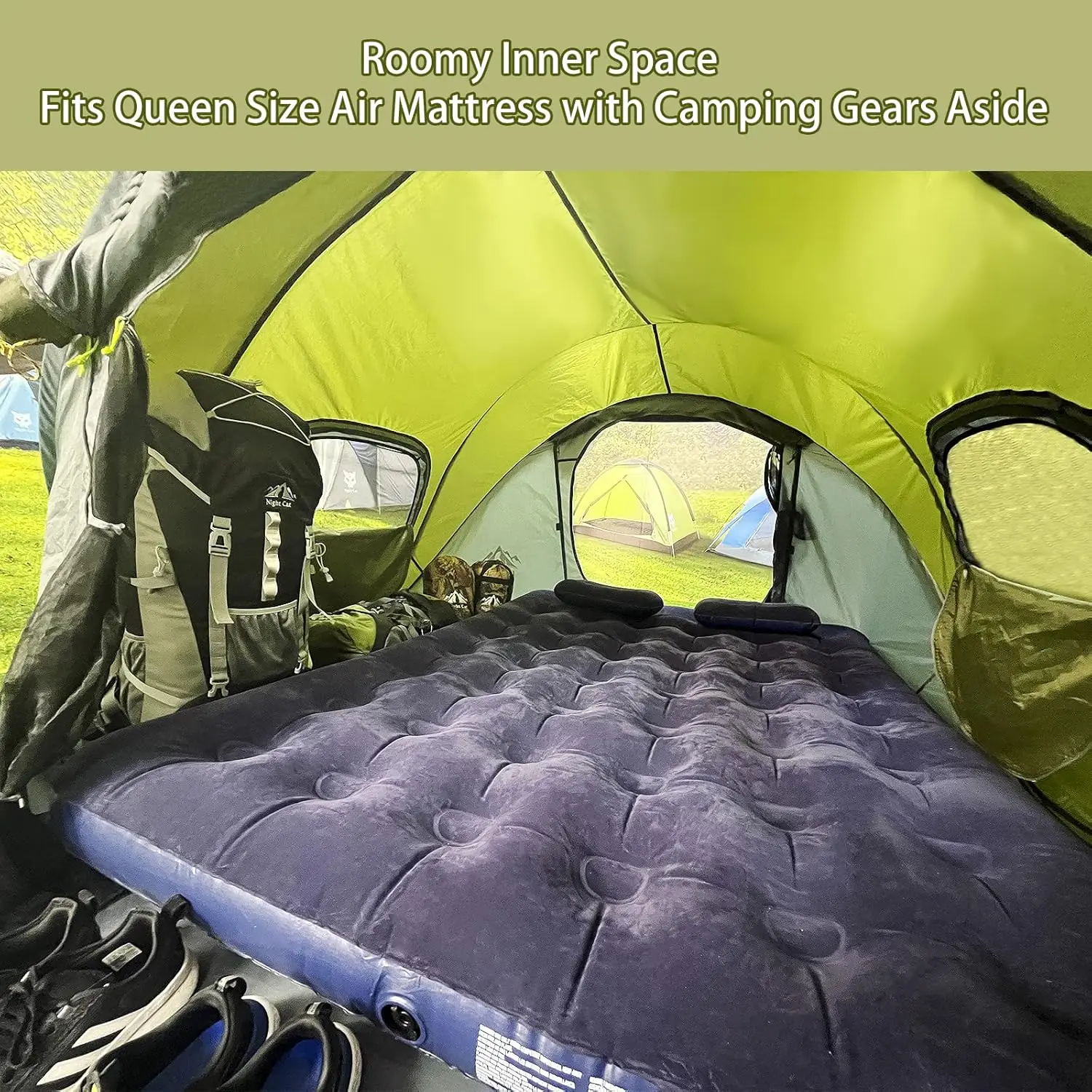
Are Expensive Materials Always Better for Rain Protection?
While premium materials generally offer superior performance, the relationship between price and waterproof effectiveness isn’t always straightforward.
When Premium Materials Are Worth the Investment
- If you camp frequently in rainy regions
- For extended trips where shelter failure would be problematic
- When setting up for long periods without takedown
- If you need a lightweight solution that’s still highly waterproof
Where Diminishing Returns Occur
The jump from a 1,500mm to a 3,000mm hydrostatic head rating provides significant real-world benefit. However, the difference between 3,000mm and 5,000mm is less noticeable in typical conditions—you might only appreciate that difference in sustained, heavy downpours.
Value Considerations Beyond Price
Calculate the cost per use rather than just the initial price:
– A $300 shelter used 50 times costs $6 per use
– A $100 shelter that needs replacement after 10 uses costs $10 per use
Our all-season tent materials guide provides additional context for evaluating the long-term value of different waterproofing approaches.
The easy setup camping tent category includes options at various price points that balance material quality with overall value.
Can You Improve the Waterproofing of an Existing Pop-Up Shelter?
Yes, you can enhance the waterproof performance of your current shelter with some DIY approaches.
Assessing Current Waterproof Condition
Before applying treatments, evaluate your shelter’s current state:
1. Set up the shelter before a rain event (or use a garden hose for gentle testing)
2. Observe where water penetrates or soaks through
3. Mark problem areas with masking tape for targeted treatment
4. Look especially at seams and high-stress points
DIY Enhancement Methods
For General Fabric Waterproofing:
1. Clean and thoroughly dry the shelter
2. Apply a tent-specific waterproofing spray like Nikwax Tent & Gear SolarProof or Gear Aid Revivex
3. Focus on worn areas where water no longer beads up
4. Allow to dry completely before packing
For Seam Reinforcement:
1. Apply seam sealer to the inside of leaking seams
2. Use a small brush for precise application
3. Multiple thin coats work better than one thick application
4. Allow full curing time between coats
Understanding common waterproofing issues in pop-up tents helps identify specific problems that may need attention.
Limitations of DIY Solutions
While aftermarket treatments can restore and enhance waterproofing, they do have limitations:
– They typically don’t last as long as factory-applied coatings
– They can’t fix structural issues like improper tent design
– Severely degraded fabrics may be beyond restoration
– Multiple treatments can build up and affect fabric flexibility
For shelters with widespread waterproofing failure, replacement often becomes more economical than continuous re-treatment.
By understanding the materials and technologies behind rainproof pop-up shelters, you can make informed decisions when purchasing, using, and maintaining your outdoor protection. At Explore Elements, we carefully select materials that balance waterproof performance, durability, and value across our entire shelter collection.

